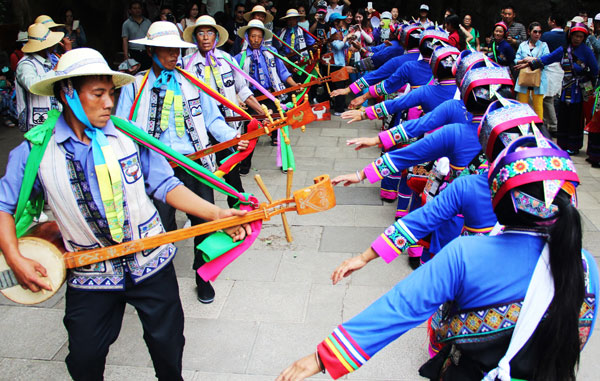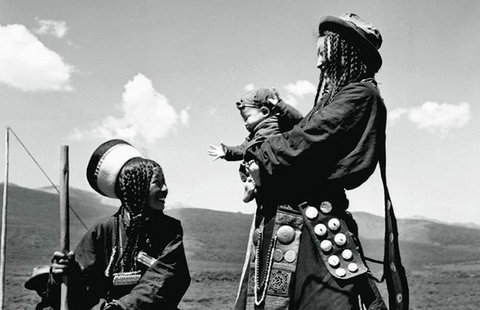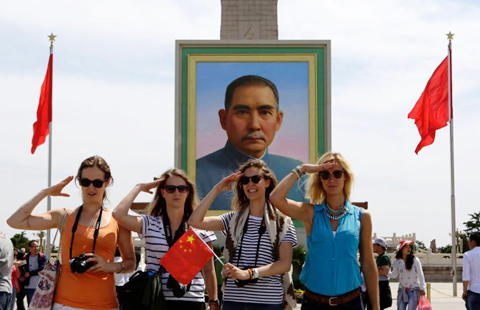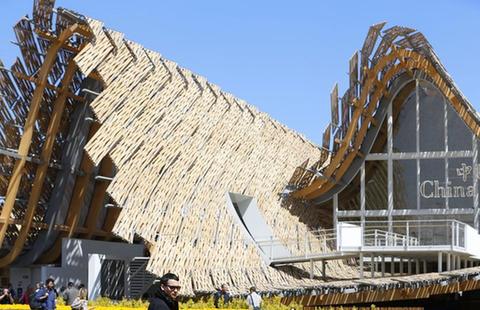Fairy tale for the ages
Updated: 2015-05-04 09:45
By Erik Nilsson(China Daily)
|
||||||||
 |
|
Ethnic Yi people perform at the Stone Forest park.[Photo provided to China Daily] |
These routes live up to their namesakes. Ahei translates as "ambitious" in the local Yi's Sani branch dialect. The hero had to undertake the trickiest trek to save his lover. Ashima means "elegant".
The two formations believed to be the petrified protagonists are the most famous-Ashima's stone is an icon representing the Sanyi, like a local Statue of Liberty.
But many of the 12-square-kilometer park's peaks have been ascribed anthropomorphic identities and associated with various sagas.
The stone spires bear such names as-and ostensibly the shapes of-Drunkard with a Drum, Phoenix Pruning Its Wings and Rhinoceros Admiring the Moon. One shard is supposed to be a shattered sword. Another is a cobra's head. Yet another is the head of the horse that carried Ashima.
Yet another is a crocodile's head with grass blades for teeth. Local people pluck the grass and put it to their lips to call birds.
The birds reply.
Then, there are whole ranges with names like Knife Mountains and Fire Sea, with points that evoke blades and flames.
The Lotus Pond is so named not because it nurtures water plants but because the stones poking out of its surface resemble their blooms.
One of the mountains is a pile under which the Monkey King-a mythical protagonist of one of China's four major classic novels-was wedged for centuries after aggravating the Jade Emperor.
A cavity in the summit is said to be the opening out of which he stuck his head to plead for his monk master to save him.
Other lore says the cave is where Taoists became immortals.

 Historical photos of 56 nations in China (Part I)
Historical photos of 56 nations in China (Part I)
 World No.1 Ma wins first men's singles world championship
World No.1 Ma wins first men's singles world championship
 Ten photos you don't wanna miss during May Day holiday
Ten photos you don't wanna miss during May Day holiday
 The world in photos: April 27 - May 3
The world in photos: April 27 - May 3
 Fans dressed up to celebrate 'Star Wars Day' in Budapest
Fans dressed up to celebrate 'Star Wars Day' in Budapest
 China pavilion opens at Expo Milano 2015
China pavilion opens at Expo Milano 2015 New exhibition by Fondazione Prada offers new perspective on originality and imitation
New exhibition by Fondazione Prada offers new perspective on originality and imitation
 Mayweather beats Pacquiao by unanimous decision
Mayweather beats Pacquiao by unanimous decision
Most Viewed
Editor's Picks

|

|

|

|

|

|
Today's Top News
Los Angeles protesters confront Abe face to face
China becomes top source of immigrants to United States
Language contest wows judges
Arrest warrants issued in birthing center cases
Baltimore mayor lifts curfew 6 days after riots
More speculation in China's market as it's new
Consul general praises Beijing university to alumni
Manufacturing hub starts work on first zero-labor factory
US Weekly

|

|






